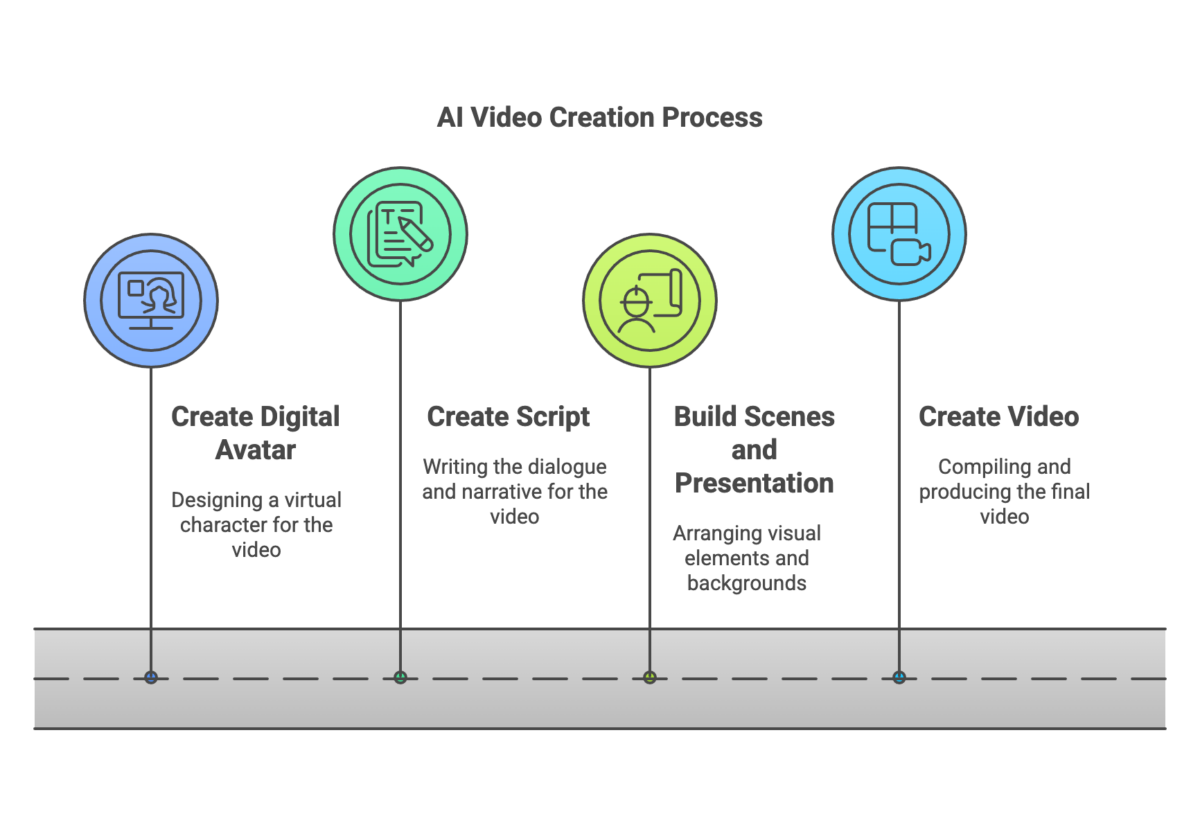I’ve been experimenting with AI video creation for one of the businesses I’m involved with, and I thought I’d share some thoughts and insights based on my experience. This isn’t a review of Synthesia (the tool I used), but rather my take on AI video creation. While there are other tools out there, Synthesia has impressed me so far.
Synthesia experiment with Chinese. Context: I don’t know any Chinese, this video was 100% created by AI.
Video Quality and Realism
The video quality, especially how it captures gestures and natural movements, is pretty impressive—almost spooky. Friends and family will likely notice it’s AI-generated, though my mother didn’t. For most viewers, the production value is excellent for professional videos. Worth noting: older relatives should be informed about the advancements in this tech, especially given the rise in AI-generated phone scams and the potential for AI video to follow suit.
Overcoming Barriers in Content Creation
Our business works with thought leaders and subject matter experts to create training videos. While these experts are highly knowledgeable, the process of creating videos can sometimes be a barrier to content production. AI and digital avatars help overcome that barrier. Creating a digital avatar means we don’t have to get the expert in front of a camera each time. Videos can be edited quickly without needing the expert to re-record or update slides.
Increased Creativity and Engagement
AI video tools like Synthesia allow us to focus on making the video more engaging, rather than just capturing the expert’s ideas. Once the avatar is created and the core content is outlined, you can focus on enhancing the video’s creative elements (e.g., interactive elements, quizzes, etc.). Subject matter experts don’t need to spend hours in front of the camera. It opens up new possibilities for creating richer, more engaging content.
Language Translation: A Game Changer
One of the biggest advantages of using AI video creation is the ability to translate videos into multiple languages with the click of a button. After creating the base video, it’s easy to localise content for different markets. While the technology helps with the translation, the expert still needs to review the content in the local language to ensure accuracy.
The Case for Real People, Not Generic Avatars
I believe it’s essential to use digital avatars of real people—ideally, team members—rather than generic, off-the-shelf avatars. People buy from people. Even though the video may feature me speaking in Chinese, I stand by the content and would happily discuss it with anyone. It’s important for viewers to feel like they can follow up with the person in the video—whether that’s meeting them at a conference or connecting via social media. The video should reflect a real human being behind it, not a faceless, generic avatar.
Considerations When Using Digital Avatars
If an employee leaves the company, you either need their permission to continue using their avatar or stop using it altogether. There should always be a review process for any content created, ensuring it’s in line with the person’s voice and message. Misuse of a CEO’s avatar—especially for a public company—could cause massive financial damage. A single video could tank stock prices if it’s used irresponsibly.
The Future: Human Interaction as the Premium Product
As AI continues to advance, one thing is clear: human interaction will remain the premium product. While AI can take over repetitive tasks, the real value in the future will lie in raw, human experiences—conversations with people who have real, lived knowledge. As knowledge workers gain more time freed up by AI, there will be more opportunities for creativity and collaboration. AI will help us think more deeply and connect with others in meaningful ways.
The Importance of Expertise and Localisation
Despite all the technological advancements, two key elements should always be prioritised: Technology can assist in video creation, but the content still needs to be driven by experts who bring real value. Just translating content isn’t enough. It’s crucial to ensure that the message resonates with the local culture and context to avoid miscommunication.

